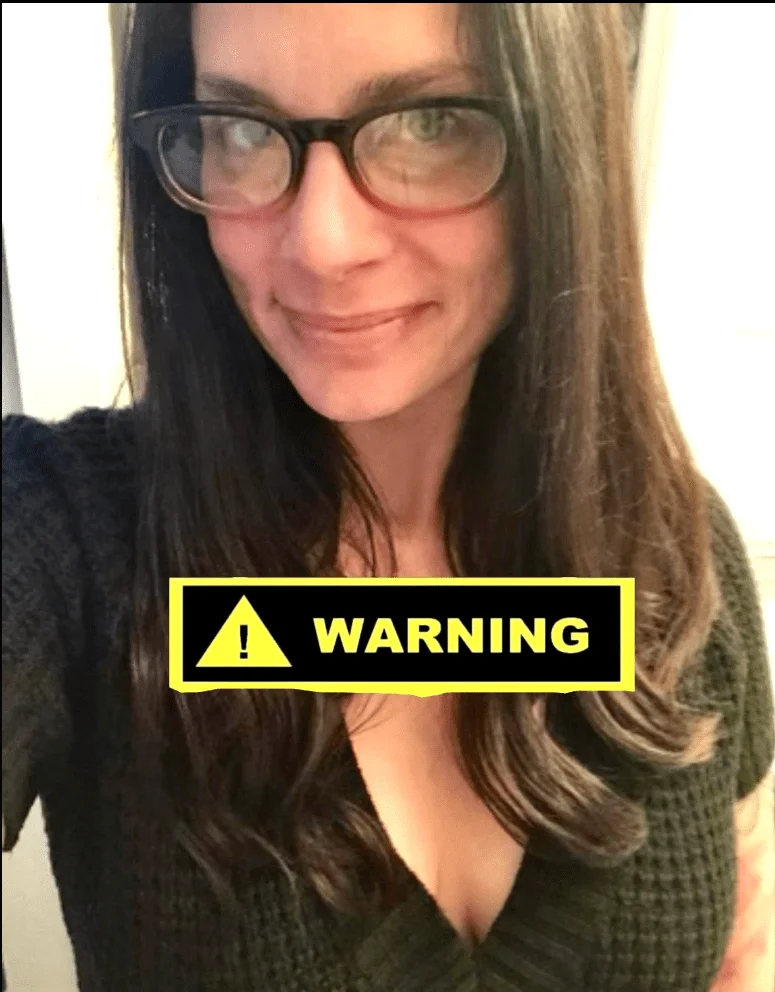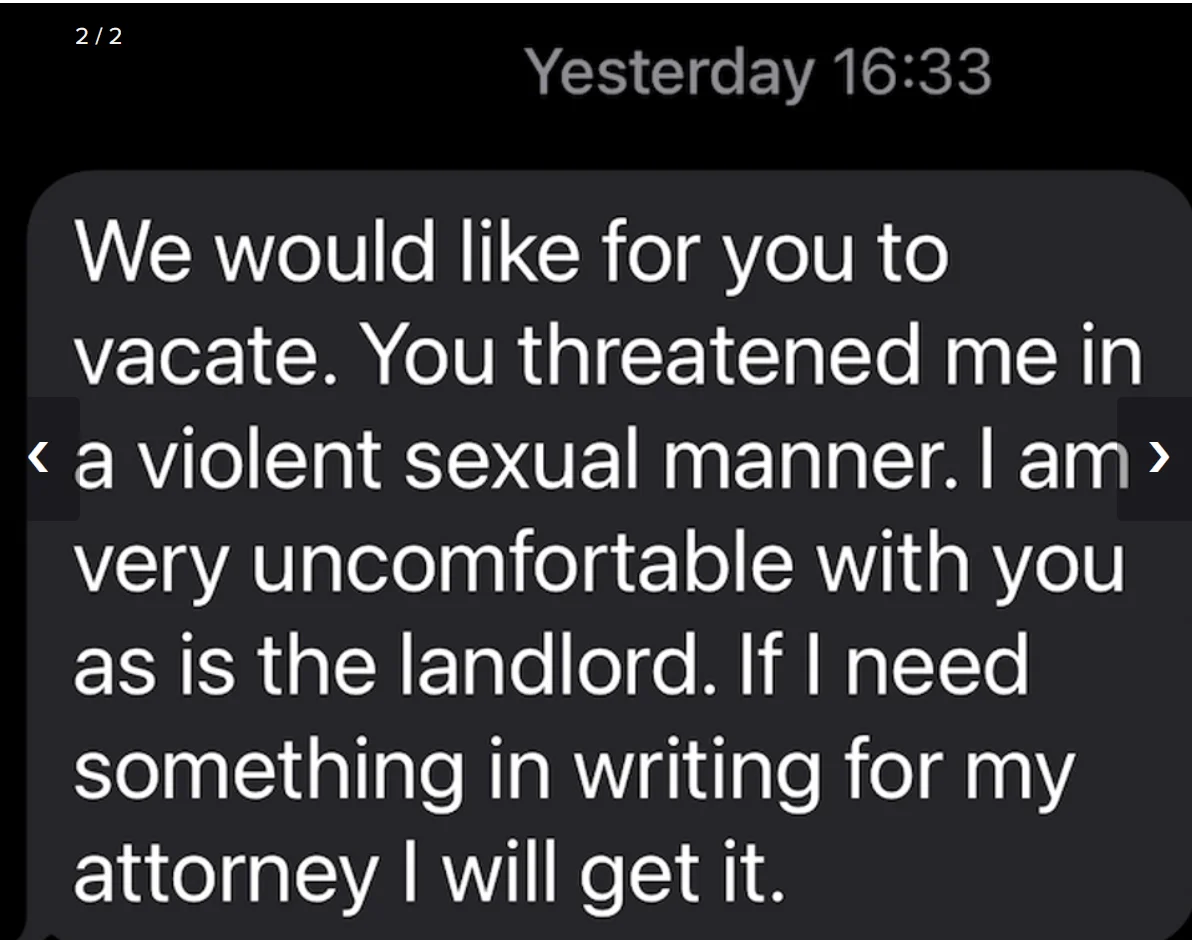- Report: #745491
Complaint Review: Little Miracles Rabbit Rescue / KRISTINE CORSON - Atco New Jersey
Little Miracles Rabbit Rescue / KRISTINE CORSON KRIS CORSON Animal Abuse, Fraud, Donation, Hoarding, Neglect, Crazy,FL, NJ, shelter, rescue, rabbit, bunny, Atco New Jersey, Florida, LMRR, Sick Animals, Untreated, Not Quarantined Atco, New Jersey, Money Abuse, Atco, New Jersey
You guessed it in Florida she did it again. She open a shelter in a garage and started her scam again. She showed plans of a memory garden and bricks you could buy that were engraved for a several hundred dollar donation. She posed as a 501(3)c organization and charity organization. She took money from credit cards that did not belong to her defrauded the public and again the animals suffered. After several years she again was forced to flee the state of Florida. The rescue at this time was located at 2411 Atwater Drive North Port FL 34286.
In 2010 Lmrr returned to NJ this time in Atco NJ. She has a Levi ate looking website and sounds semi intelligent if you dont speak to her for too long. The Camden County BoRd of Health put a cease and desist order on Lmrr but she continues to ignore it. Her fraud is rampant on the internet she refuses to pay loans she slanders and defames anyone that questions her. Names addresses businesses have all been attacked by her. In addition she posts under a multitude of aliases having conversations with herself in order to look legitimate.
Little Miracles Rabbit Rescue is a SCAM! I wish someone anyone would investigate her! She has broken state and federal laws for over 10 years now. She must be stopped before any more animals are found in her freezer or she takes advantage of elderly citizens by stealing their retirement saving from them!
2 Updates & Rebuttals
Spinach
Westfield,New Jersey,
USA
DOH Official Report
#2Consumer Comment
Fri, September 07, 2012
Little Miracles Rabbit Rescue
2308 Auburn Ave
Atco, NJ 08004
(Township of Waterford, Camden County)
Continuation sheet for inspection conducted on July 24,
2012 by Linda Frese and Renee Cirillo, New Jersey Department of Health, and
James Perry, Camden County Department of Health.
Section 8:23A Deficiency
1.2(a) Facility is in substantial non-compliance with the provisions of N.J.A.C. 8:23A 1 through 13.
1.2(b) A certificate of local health inspection was not prominently displayed at the facility.
1.2(c) The back area of the small animal room is currently under construction and outdoor enclosures are being installed. Plans must be submitted to the local health authority for review and approval for both indoor and outdoor renovations and improvements before construction and operation begins. A schematic showing the layout and operation of the ventilation system used for the isolation room must also be submitted in the plans to the local health authority. The ventilation in an isolation room must exhaust directly to the outdoors and must not mix with the air of the general population.
1.3(a) The layout of the caging in the main rabbit room creates a nuisance. Some of the storage items and cages along the outside walls in this room designated as the projects, are in close proximity to the wooden rabbit enclosures in the center of the room designated as the condos, restricting movement of staff during the cleaning process. A cage on the floor, in the corner of the isolation room containing an animal named Bertucci, was made inaccessible due to the storage of cages, carriers, and boxes stacked over 6 feet high on top of his cage. Hindering immediate access to animals in cages constitutes a nuisance.
1.3(c) Food and hay is stored in large uncovered containers unprotected from contamination.
1.3(d) A bin containing alfalfa was marked with a sign that said Do Not Use and was stored with the pelleted food and hay that is used on a daily basis. Food waste that is deemed
to be contaminated or otherwise unusable must be removed and disposed of.
1.3(e) The facility had no hot water available at the time of inspection and the gas was said to be turned off since Friday. The gas company, South Jersey Gas, was contacted by NJDOH staff and the company confirmed that the gas supply was shut off to that address, but not due to construction or repair of any gas lines as stated by facility management. The reason for the gas shut off by the company was not disclosed due to privacy protection reasons.
1.3(f) The clothes dryer exhaust does not appear to be vented to the outdoors and an accumulation of lint was found around the dryer, on the floors, walls, and on the supplies kept on the shelf next to the dryer. The electric outlet above the dryer also contained an accumulation of lint and cob webs posing an electrical fire hazard.
Vegetation is overgrown in the back of the building with wild plant growth approximately 3 feet tall. Premises shall remain free of accumulations of trash and the overgrowth of vegetation up to the property line or within 20 feet of the facility.
Note
for 1.4 (c) Although the air conditioning unit was not working properly at the (not a deficiency) at time of this inspection, the exhaust fans continued to work properly and the indoor temperature readings varied between 77 degrees and 80 degrees Fahrenheit. The outdoor ambient temperature
readings were 97 degrees Fahrenheit.
Animals housed at the facility did not appear to be in distress from heat at the time of this inspection.
1.4(d) Lighting in most areas of the facility was insufficiently distributed to permit routine inspection and cleaning during the entire working period. Most of the cages against the walls in all rooms were dark and inspectors were unable to view inside the enclosures without the use of a flashlight.
1.4(f) All interior building surfaces must be impervious to moisture and readily cleaned. The wood behind the metal cages in the back of the small animal room is not impervious and is stained with urine.
The floors in the isolation room are stained and are not impervious to moisture. The floor in
the office area and the main access area between the main rabbit room and the small animal room contains carpeting. The carpet behind and around the desk had numerous rabbit droppings on it and large water type stains. This room smelled of a sour, possibly vomit type odor. Animals shall
not be permitted on surfaces that are not impervious and easily cleaned and disinfected. Carpeting used in animal enclosures must be removed and replaced with new carpeting when wet or contaminated with excreta, or when a different animal is placed in the enclosure. Carpeting is not impervious to moisture and cannot be readily cleaned and disinfected.
Some base edges of the exterior wall that meet the floor are exposed concrete block and are not impervious to moisture.
1.5(e) Outdoor enclosures are being erected that consist of sand as flooring material. Surfaces of outdoor enclosures shall be constructed and maintained so that they are impervious to moisture and may be readily cleaned and disinfected; run off from outdoor enclosures must be properly disposed of as required by the municipal sewerage authority.
1.6(a) Some animal crates and cages are stacked, but are not designed for this purpose. Debris and waste from upper cages falls into the cages below. Cages and crates must not be
stacked one on top of the other unless suitable support structures and barriers are used. The supports must be able to hold the weight of the uppe cage and prevent the upper cage from resting on the lower cage. Barriers must be used between the upper and lower cage to prevent contamination of the lower cage from debris and waste from the upper cage.
Animal enclosures are not maintained in good repair. The wooden painted cages designated as the condos have chewed and worn surfaces and are unable to be properly cleaned and disinfected. Wooden cages in the front of the main rabbit room are extensively saturated with urine and so severely chewed that they can no longer be cleaned, disinfected, or deodorized. These cages must be removed from the facility.
1.6(a)4. Animals are unable to remain clean and dry due to the excessive amount of excreta in their primary enclosures.
1.6(d) Animals are rotated to a playpen during the cleaning process. At the time of this inspection, the playpen contained an accumulation of excrement and debris from other animals. This
playpen was not cleaned and disinfected between inhabitants. All enclosures, carriers, and holding pens or runs must be cleaned and disinfected before another animal is placed in them.
1.7(a) Hay used as food for the rabbits and pellet type food is not discarded and replaced on a daily basis as required. Pellet type food is only given every other day.
1.7(b) Food, particularly hay, is placed in the litter boxes for the rabbits to eat. This hay is contaminated with excreta and is not discarded and replaced on a daily basis as required in 1.7 (a) above. Other food placed on the floor of enclosures is also contaminated with excreta and needs to be removed and replaced on a daily basis.
1.7(d) Hay used as food for the rabbits is placed inside the litter boxes and quickly becomes contaminated by excreta. Containers of food shall be accessible to animals and shall be located so as to minimize contamination by excreta.
1.7(e) Feeding pans are not cleaned and disinfected on a daily basis as required.
1.7(h) Water bottles are not cleaned on a daily basis. The bottles are topped up with water when they become less than half full. Receptacles for water must be cleaned daily.
1.8(a) Excreta is not removed from primary enclosures often enough to prevent contamination of the animals contained therein, and to control odors. At the time of inspection,
enclosures contained an excessive amount of excreta and odors were uncontrolled due to the amount of
urine and feces in each primary enclosure, including urine and feces saturated wood pellets used as litter in litter receptacles.
Animals are not removed from enclosures during the cleaning process. At the time of inspection, cleaning fluids were poured into the enclosures containing rabbits, for the purpose of allowing the cleaning fluid to soak to remove caked on waste materials. Cleaning staff sprayed cleaning solutions and vacuumed enclosures while the animals remained in the enclosures.
1.8(b) Primary enclosures are not cleaned often enough to prevent an accumulation
of debris and excreta. At the time of this inspection, there was an excessive amount of excreta and debris on cage floors and resting benches.
1.8(c) Cages and hard surfaced pens are not cleaned and disinfected on a daily basis. Floors are swept and occasionally wet mopped but are not disinfected on a daily basis. All floors, animal enclosures and other pens or holding areas must be cleaned and disinfected on a daily basis. Urine encrusted stains in primary enclosures and litter receptacles must be thoroughly scrubbed to remove the stains before the final disinfection process.
1.8(d) All interior surfaces throughout the entire facility were covered in dust, dirt and debris and not kept clean. All surfaces, including the area where cleaning supplies are stored and where hay and feed is dispensed must be kept free of an accumulation of dust, dirt and debris. Cobwebs, dirt and debris must be removed from all areas, including ceilings, walls, shelves, electric outlets, lighting fixtures, stored caging, carriers, etc. Areas around sinks, wash basins, counter tops, refrigerators, food preparation areas, and the washer and dryer area must be scrubbed clean and kept in good repair. Items creating clutter must be either removed or properly stored to prevent nuisances and to facilitate proper cleaning throughout the facility.
Areas around primary enclosures where urine, feces, and debris accumulate must be thoroughly scrubbed to remove the dried, encrusted urine stains and cleaned and disinfected on a daily basis.
1.9(a) Records must be made available regarding the treatment of animals at the facility, such as daily medical logs indicating the type of treatment provided and the duration of treatment. Evidence of veterinary examinations and site visits with documented findings must also be made available to inspectors. These records are required to document compliance with
the provisions of this act.
1.9(d) A rabbit named Dante was brought into the facility on 4/18/12 with a severe leg injury. The leg was splinted by the shelter president on the day of arrival, but records show that this animal was not seen by a veterinarian until 5/11/12. There was no evidence produced at the time of this inspection that showed the rabbit was provided with at least prompt, basic veterinary care as required. This rabbit was not at the facility on the date of this inspection.
1.9(g) Multiple items, including a dishwasher was stored in the isolation room at the time of this inspection. A refrigerator used to store medications for use in the isolation room was blocked by 2 large rolling storage units.
The isolation room is not to be used for any purpose other than the segregation of animals with signs of communicable disease. All items that are being stored in the isolation room must be removed, cleaned and disinfected, or disposed of if the item can not be disinfected,
and appropriately stored elsewhere to prevent contamination.
Animals that were not exhibiting or being treated for signs of communicable disease were housed in the isolation room at the time of this inspection. This included wild rabbits that had been raised by a surrogate mother and were isolated due to stress; a rabbit named Allyson that was isolated due to pregnancy; Bertucci, isolated for a bite wound; Lennox, isolated for bad teeth; and a rabbit brought to the facility for boarding with no name or cage card. There were no daily treatment logs or other records showing that animals housed in the isolation room were being treated for a communicable disease.
If animals need to be segregated for reasons other than communicable
disease, they must be housed in a different area of the shelter that meets the needs of the animals, such as a quite area to provide relief from stress. This would also include animals that are brought into the shelter and are being observed for a period of time before being placed with the general population, but are not currently exhibiting signs of communicable disease.
1.10(a)1. Stray animals are accepted into the facility although the facility is not licensed as a pound and the shelter is not contracted with or authorized by any New Jersey municipality to accept and impound stray animals. Any animal brought to the facility that is known to be or suspected to be a stray animal must not be accepted into the facility, but must be turned over to the contracting animal impoundment facility for the municipality where the animal was found.
Wild rabbits were found at the facility at the time of this inspection. Wild animals must be turned over to a wildlife rehabilitator currently licensed in New Jersey by the New Jersey Division of Fish and Wildlife.
People bringing animals to the facility are ordered to sign an owner surrender form even when the person bringing the animal into the facility states that they are not the owner of the animal and the animal was found as a stray. One example is a rabbit named Princess, 8 weeks old,
which arrived at the facility on 6/19/12, ID#PR061912. This practice of falsifying documents must
cease immediately and all stray animals must be handled as stated above.
1.13(a) Some animals housed at the facility did not have proper records at the time of this inspection. A cage card on a cage that was empty, but had not been cleaned, showed that Aerie, ID number 5/9/12, was adopted on 5/19/12. This animal was said to be owned by the facility president, but when questioned, the name of the animal as stated on the cage card was unknown and no records were found for this animal. Inspectors were told that several animals marked as adopted on the cage card were actually owned by the facility president.
Animals that are said to have been born at the facility are recorded as stray on the animals records.
All animals housed at the shelter must have proper records indicating the date the animal arrived, description of the animal, breed,age, and sex; name of the owner or person from whom the animal was acquired, and the final disposition of the animal when the animal dies or otherwise leaves the facility.
Mrserindavis
Somers,Wisconsin,
United States of America
False claims
#3REBUTTAL Owner of company
Thu, May 03, 2012
I find it strange that this post is so demeaning. I also find it strange that the poster of this complaint has so much intimate knowledge of the rescues Leader. There are a lot of false claims on the Internet against LMRR. The SPCA has been out to the rescue many times and it is always in orderly fashion. After an investigation all of the accusations were formally dismissed and found erroneous. Please visit the shelter before making a judgement. The personal on going vandetta that has been waged on this rescue for the past 3 years is not warranted. If you research you will see that these people will see no end to the agrivation they will cause. I hope that LMRR pursues legal action for this.
























